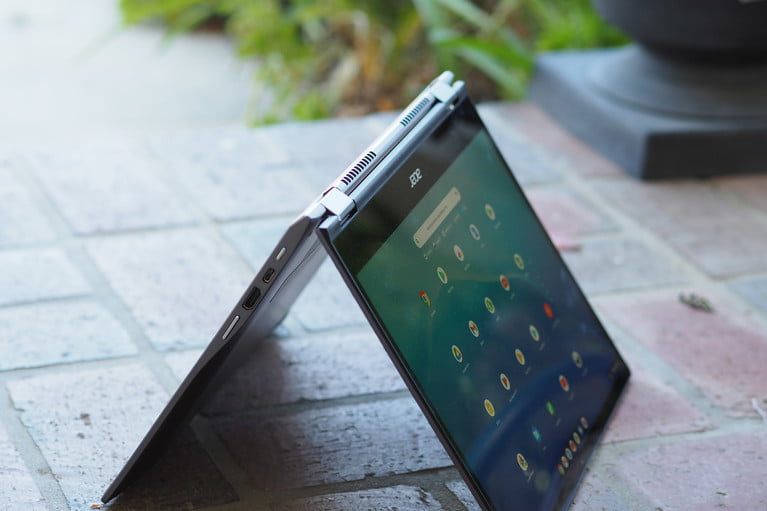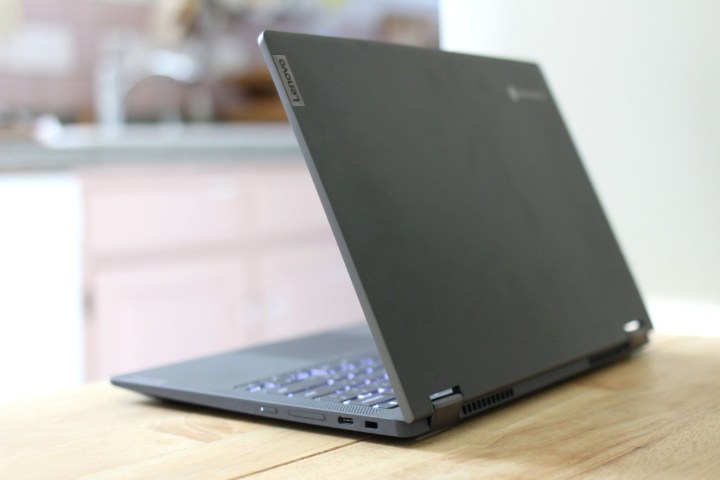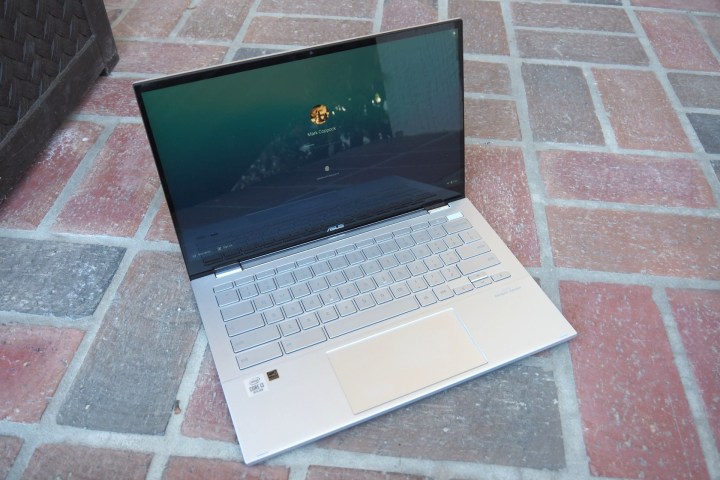The best Chromebooks for 2023
Looking to buy a new laptop on a budget? Here are all the best Chromebooks in 2023. They're affordable, powerful, and highly capable.

We’ve reviewed hundreds of the best laptops over the years, testing for important qualities like performance, battery life, and display quality. And we’ve found that Chromebooks consistently excel at performance and reliability. The best Chromebooks we’ve assembled here are something special, however. They offer solid performance, excellent functionality, and enough diversity to handle just about any need.
The Best Chromebook: Google Pixelbook Go
| Specifications |
|
| CPU: | Intel Core m3 |
| RAM: | 8GB |
| GPU: | Intel UHD Graphics 615 |
| Screen: | 13.3-inch full HD |
| Storage: | 64GB SSD |
| Dimensions: | 12.2 x 8.1 x 0.5 inches |
If you’ve been learning all about what Chromebooks vs laptops and contemplating what a reliable brand to go for is, you can’t really go wrong with a Google Pixelbook Go. After all, who could be better than Google, creators of the Chrome OS, to know how to get the best out of it? The Google PixelBook Go is a super efficient demonstration of the popular operating system. It has a great Intel Core m3 processor along with 8GB of memory and 64GB SSD for storage. While other Chromebooks might favor the cheaper (and slower) eMMC format, the Google Pixelbook Go gives you an extra boost of speed.
Such a speed boost means during your downtime, you might even wish to consider checking out the best games for Chromebooks, giving you a fun break from work. Elsewhere, its 13.3-inch full HD display is a touchscreen display so you can get more hands-on with what you’re doing. That goes for whether you’re creating a presentation or opting to find your favorite shows on a streaming service to indulge in. The latter will benefit from the Chromebook’s dual front-firing speakers so you get a better surround sound style effect leading to a less tinny sounding experience.
The little attention to details continues with how the Google Pixelbook Go packs in a lot of premium features. It has both wired and Wi-Fi options so you can hook it up via Ethernet as well as Wi-Fi. It also has a backlit keyboard so you can see it more clearly in dim lighting. A spacious touchpad helps you get things done more effectively too, while Hush Keys keep the experience quieter than average as well.
The bezels of the Chromebook may be a little chunky but other than that, the design is highly portable with fantastic battery life that easily lasted over 12 hours in our tests. If you’re looking for something reliable that will last you all day, this is the one you want and need. Outside of there being no fingerprint scanner for security, the Google Pixelbook Go has all the essentials.
Read our Google Pixelbook Go review.
Other Chromebooks We Recommend
Best 2-in-1 Chromebook: Acer Chromebook Spin 713
 Mark Coppock/Digital Trends
Mark Coppock/Digital Trends| Specifications |
|
| CPU: | Intel Core i5 |
| RAM: | 8GB |
| GPU: | Intel UHD Graphics |
| Screen: | 13.5-inch IPS |
| Storage: | 128GB SSD |
| Dimensions: | 11.8 x 9.3 x 0.67 inches |
If you’re looking for a 2-in-1 Chromebook that’s also powerful, you need the Acer Chromebook Spin 713. We described it as supremely powerful thanks to being one of very few Chromebooks to be Evo certified. This isn’t cheap by any means so steer clear if you’re looking for one of the best budget laptops. For everyone else though, it’s a delight to use.
An all-aluminum chassis reaches near premium laptop levels in terms of build quality, reminding you that you’ve bought something classy. Impressively, it has Thunderbolt 4 support which you don’t normally see on Chromebooks along with the usual selection of USB ports, a full-size HDMI port, and 3.5mm audio jack. It’s powerful too with an Intel Core i5 processor, 8GB of memory, and 128GB of SSD storage. Many Chromebooks stick with a lower amount of storage space so 128GB is great to see if you’d prefer to store more files on the laptop itself rather than the cloud. As a guide, many regular Windows laptops have this amount of space so you know what to expect. It’s speedy too with our tests finding it able to handle all the Android games we threw at it and a ton of browser tabs too.
The display is slightly different from others being taller and offering a 3:2 aspect ratio. A resolution of 2,256 x 1,504 is useful providing you with sharp text and images. It’s ideally suited for working on presentations and other projects, ensuring you gain clear insight into what’s going on. Don’t count on it being an ideal display for working outdoors under a bright sun but for everything else, it’s good quality with colors that seem natural and not oversaturated. The downside? Speaker quality is a little weak for listening to music but it’s adequate.
Rounding things off on a better note, the Acer Chromebook Spin 713 has a great large touchpad which combined with the super responsive touch display means you’re always in control. Reasonable battery life of 8.5 hours works well with a system that’s more powerful than the average Chromebook so you get a decent experience throughout the day.
Read our Acer Chromebook Spin 713 review.
Best Budget Chromebook: Lenovo Chromebook Flex 5

| Specifications |
|
| CPU: | Intel Core i3 |
| RAM: | 4GB |
| GPU: | Intel UHD Graphics |
| Screen: | 13.3-inch IPS full HD |
| Storage: | 64GB eMMC |
| Dimensions: | 12.2 x 8.34 x 0.7 inches |
The laptops under $500 market is usually pretty flakey and not exactly what you want from a Windows 11 machine. That’s why something like the Lenovo Chromebook Flex 5 is perfect if you’re willing to switch to the Android world.
As with the other Chromebooks here, Lenovo has packed in a processor you’ll see on Windows systems — a 10th-generation Intel Core i3 processor. It also has 4GB of RAM. That might not sound like much but Chrome OS runs fast on here, even for a system that’s nearly three years old now. Gaming is out of the question even when it comes to Android games, but performance for work tasks is respectable enough. You’ll be able to have a number of Chrome tabs open without suffering here. It’ll also work well with Google apps even if it won’t wow you. Similarly, battery life is also respectable if not amazing. It offers about six to seven hours which isn’t far off a working day if you factor in breaks. Crucially, at this price, it’s a fairly respectable figure even if it’s not exactly exciting.
Its 13.3-inch IPS LED touchscreen display offers a standard 1,920 x 1,080 resolution. It doesn’t include the sharpest of color quality and it only brightens up to 250 nits so it’s not great for outdoor use or even sitting by a window. Its upward-firing speakers are similarly ‘fine’ and nothing more but again, this is a budget Chromebook. On the plus side, you do get a great typing experience. Keycaps are large with plenty of travel and responsiveness. It’s also a backlit keyboard and its touchpad is large if a little sloppy at tracking. You can always switch over to the touchscreen if that feels more comfortable.
For anyone on a tight budget, the Lenovo Chromebook Flex 5 may never truly excite but it gets the job done. Perhaps best suited for a student, it works well on the move if you don’t mind not quite having a full day’s worth of battery life.
Read our Lenovo Chromebook Flex 5 review.
Best Premium Chromebook: Asus Chromebook Flip C436
 Mark Coppock/Digital Trends
Mark Coppock/Digital Trends| Specifications |
|
| CPU: | Intel Core i3 |
| RAM: | 8GB |
| GPU: | Intel UHD Graphics |
| Screen: | 14-inches full HD |
| Storage: | 128GB SSD |
| Dimensions: | 12.6 x 8.1 x 0.54 inches |
Anyone who’s been reading up on the differences between Chromebooks and laptops might be worried that they’re getting an inferior product by steering toward Chromebooks. The Asus Chromebook Flip C436 demonstrates that really isn’t the case. A truly premium product, its only real rival remains the Samsung Galaxy Chromebook 2. It’s the kind of Chromebook you could mistake for a Windows-based system. A flagship model, it offers phenomenal build quality. Its aluminum shell looks great while also feeling solid in your hands. Even its hinge opens smoothly with one hand and feels solidly reliable. It doesn’t even shake when you switch it to clamshell, presentation, tent, or tablet modes — something you’re likely to do often thanks to the touchscreen. Reasonably small bezels with an 85% screen-to-body ratio proves useful too when it comes to good looks.
Elsewhere, port options are a little limited with just two USB-C 3.1 ports and no Thunderbolt support. There are also no HDMI or USB-A ports so you’ll need to add on a dongle or two. However, there is a microSD card reader and a 3.5mm audio jack. The keyboard feels great too with oversized keycaps, 1.2mm of travel, and a snappy feeling while you use it. A wide touchpad further helps with responsiveness. The 14-inch full HD display is sufficient with decent contrast although it’ll struggle under direct sunlight. It’s matched up with some reasonable speakers for all your streaming needs.
Performance-wise, an Intel Core i3 processor isn’t the fastest but with 8GB of RAM and 128GB of SSD storage, this is a Chromebook that can keep up with most of what you’re doing. You’ll be fine to open plenty of Google Chrome tabs at once as well as switch between many different apps without an issue. Gaming is pretty smooth too.
Depending on what you’re doing, you should be able to count on about 10.5 hours of battery life. For the average working day, you should be happy with these results even if it’s not quite as impressive as the Google Pixelbook Go. For anyone that needs a more high-end Chromebook, this is a great option.
Read our Asus Chromebook Flip C436 review.
How to Choose a Chromebook
The pickings were slim when Chromebooks first came onto the scene about a decade ago, but today, pretty much every major PC maker offers its own Chrome OS laptops, and they cover the entire spectrum of sizes, hardware configurations, designs, and prices. If you want a super-cheap 11-inch Chromebook with mobile hardware, they’re out there. If you want a high-end 2-in-1 Chromebook with a 4K display and the latest hardware, you’ve got options. In 2020, narrowing down this field to find the best Chromebook for your needs and budget is now much the same as shopping for any Windows laptop — although there are some distinctions to keep in mind.
As Chromebooks run on Google’s cloud-based Chrome OS operating system, they’re not quite as resource-heavy as Windows laptops. That doesn’t necessarily mean that Chromebooks can perform the same tasks as Windows laptops for less — for instance, Chrome OS is not really designed for demanding jobs like gaming or video rendering, where you’ll be better served by a Windows PC with a dedicated GPU. The cloud-based convenience of Chrome OS lends itself especially well to things like web browsing, document writing, taking online classes, and similar projects for work and study. That means they’re a great choice for those heading off to college or attending school virtually, and you can have a look at the best Chromebooks for students.
Super-cheap Chromebooks in the sub-$300 bracket tend to sport pared-down mobile CPUs (such as Intel Celeron, Intel Pentium, Intel N-series, AMD A-series, and MediaTek processors), a minimal amount of RAM (usually 4GB), and 32GB to 64GB of eMMC flash storage. These are simple laptops built for basic tasks, and they’re perfectly suitable as a first laptop for a kid, a backup computer, or a machine that’s solely dedicated to school or work (i.e. it won’t be your PC for a heavy user). You get what you pay for, but if your needs are modest and your expectations are realistic, you won’t be disappointed. The best brands to look for here include Lenovo with products like the Lenovo Chromebook Flex 5, or Dell, HP, Acer, Asus, and Samsung. You can even find some cheap 2-in-1s among these budget Chromebook offerings.
If you need something that’s more like a traditional laptop in terms of hardware in performance, you can usually expect to pay something closer to traditional laptop prices. However, there are a lot of good Chromebooks out there, like the Google Pixelbook and Samsung Chromebook Pro. Many of these higher-end Chromebooks come loaded with the latest Intel Core CPUs, boosted RAM, and proper solid-state storage drives, along with nicer displays (up to and including 4K panels on some of the newer models). And a high-end Chromebook can be a great investment. The top brands to look for in this bracket are Lenovo, Samsung, and Google, with laptops like the Google Pixelbook Go, Lenovo IdeaPad Duet, HP Chromebook 15, Asus Chromebook Flip C436, and Samsung Galaxy Chromebook being some of own favorites.
How We Tested These Chromebooks
We’ve spent countless hours testing and reviewing Chromebooks. We take all of this first-hand experience, also analyzing feature set, price points, to determine which Chromebook is best for each individual use case. For example, the best all-round Chromebook is not the same as the best 2-in-1, or the best for battery life. Think of it as a Jack of all trades, and a master of none.
You’ve read our laptop reviews. You’ve read our conclusions. And now you’re wondering how we came to them. Reviews often lack context, which is evident in the wildly different scores some laptops receive from different publications. Conflicting opinions can actually make buying a laptop more difficult if the review’s criteria isn’t made clear, so we outline how we test laptops in detail.

Today's tech news, curated and condensed for your inbox
Check your inbox!
Please provide a valid email address to continue.
This email address is currently on file. If you are not receiving newsletters, please check your spam folder.
Sorry, an error occurred during subscription. Please try again later.

 Fransebas
Fransebas 































